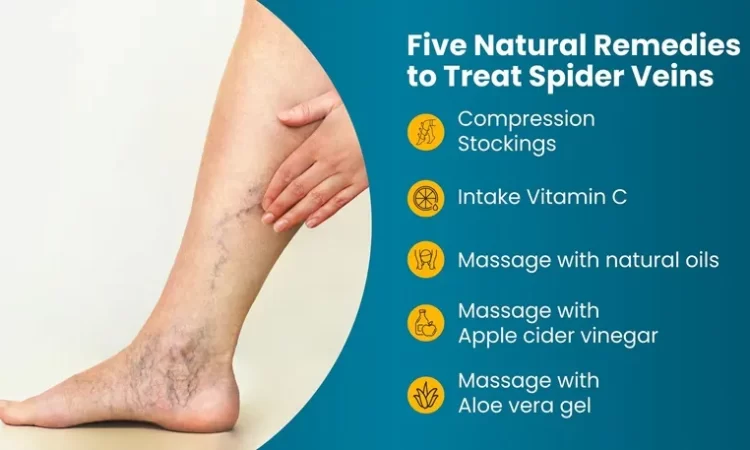
Spider veins are a common cosmetic concern for many people. These small, visible veins, usually appearing on the legs or face, can be unsightly and sometimes cause discomfort.
Fortunately, there are several effective options for treating spider veins, allowing you to improve the appearance of your skin and restore your confidence.
If you’re exploring vein treatment options, it’s important to understand the different procedures available and which one may be right for you.
Here’s a guide to the most common treatments for cosmetic veins and what you can expect from each.
1. Sclerotherapy
One of the most popular and effective treatments for spider veins is sclerotherapy. This minimally invasive procedure involves injecting a solution, typically a salt solution or another chemical agent, directly into the affected veins.
The solution irritates the lining of the veins, causing them to collapse and eventually fade away as they are reabsorbed by the body.
Sclerotherapyis a highly effective option for treating spider veins, particularly those on the legs. It’s a relatively quick procedure, usually lasting about 30 minutes, and most patients see noticeable improvement after just one or two treatments.
The procedure causes minimal discomfort, and there’s no need for anesthesia, making it a convenient option for many people.
2. Laser Treatment
Another popular method for treating spider veins is laser therapy. This procedure uses focused light energy to heat and destroy the affected veins, causing them to collapse and fade over time.
Laser treatment is especially effective for smaller veins, and it’s often used for veins on the face, where injections might not be appropriate.
One of the key benefits of laser treatment is that it’s non-invasive—there are no needles or incisions involved.
However, the procedure may cause some discomfort, as the laser light can create a sensation of heat on the skin. Multiple sessions may be needed to achieve the desired results, depending on the size and number of spider veins.
Laser treatment also has the advantage of being quick, with minimal recovery time.
3. Endovenous Laser Therapy (EVLT)
For larger spider veins or those associated with underlying venous insufficiency, endovenous laser therapy (EVLT) may be recommended.
This procedure is slightly more invasive than traditional laser therapy but is still considered minimally invasive. A small catheter is inserted into the vein, and a laser fiber is used to heat the vein from the inside, causing it to close and eventually fade.
EVLT is typically used for larger veins and may be combined with other vein treatment options like sclerotherapy to achieve optimal results. The recovery time is minimal, and patients can often return to normal activities within a day or two.
4. Radiofrequency Ablation (RFA)
Radiofrequency ablation (RFA) is another option for treating larger cosmetic veins. Similar to EVLT, RFA uses heat to collapse and close off the affected veins.
However, instead of using laser energy, it utilizes radiofrequency energy to achieve the same effect. RFA is especially effective for larger spider veins and varicose veins and can be performed on an outpatient basis.
Patients who undergo RFA often experience minimal discomfort during the procedure and a short recovery time. Like other vein treatments, the affected veins will gradually fade over several weeks or months after treatment.
5. Surface Laser Treatments for Smaller Veins
For smaller veins, particularly those on the face, surface laser treatments are a popular option. Unlike EVLT or RFA, surface laser treatments do not involve inserting a catheter or needle into the vein. Instead, the laser is applied directly to the skin’s surface, targeting the veins just beneath.
This type of laser treatment is ideal for smaller spider veins and is typically used for facial veins or veins that are too small for other types of treatment. Patients may require several sessions to see the best results, but the treatment is quick and requires no downtime.
6. Lifestyle Changes and Compression Stockings
For those with mild spider veins, lifestyle changes and compression stockings may help reduce symptoms and prevent the condition from worsening.
Elevating the legs, exercising regularly, and avoiding prolonged sitting or standing can improve circulation and reduce the appearance of spider veins.
Compression stockings apply gentle pressure to the legs, promoting better blood flow and helping prevent new spider veins from forming.
While lifestyle changes and compression stockings won’t eliminate spider veins, they can be an effective part of a broader treatment plan, especially when combined with professional treatments.
When it comes to treating spider veins, there are several vein treatment options available, ranging from minimally invasive procedures like sclerotherapy and laser treatment to more advanced methods like EVLT and RFA.
The right option for you will depend on the size, location, and severity of your spider veins, as well as your personal preferences and goals. Consulting with a vein specialist will help you determine the best course of action for achieving smooth, clear skin.
If you’re ready to explore your options, schedule a consultation to find out which cosmetic vein treatment is right for you. A professional will guide you through the process, ensuring that you get the results you’re looking for.




